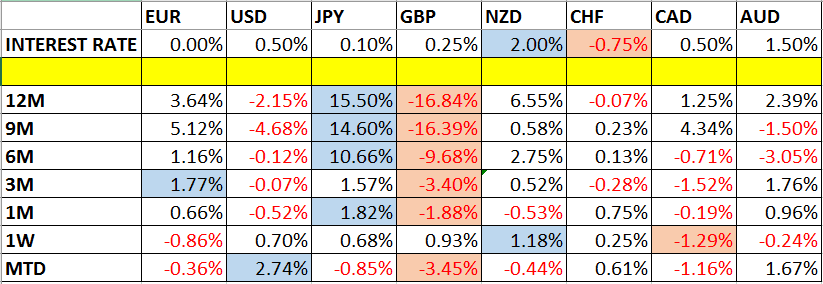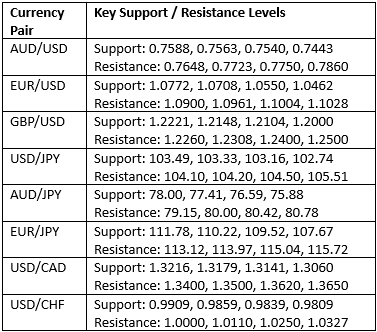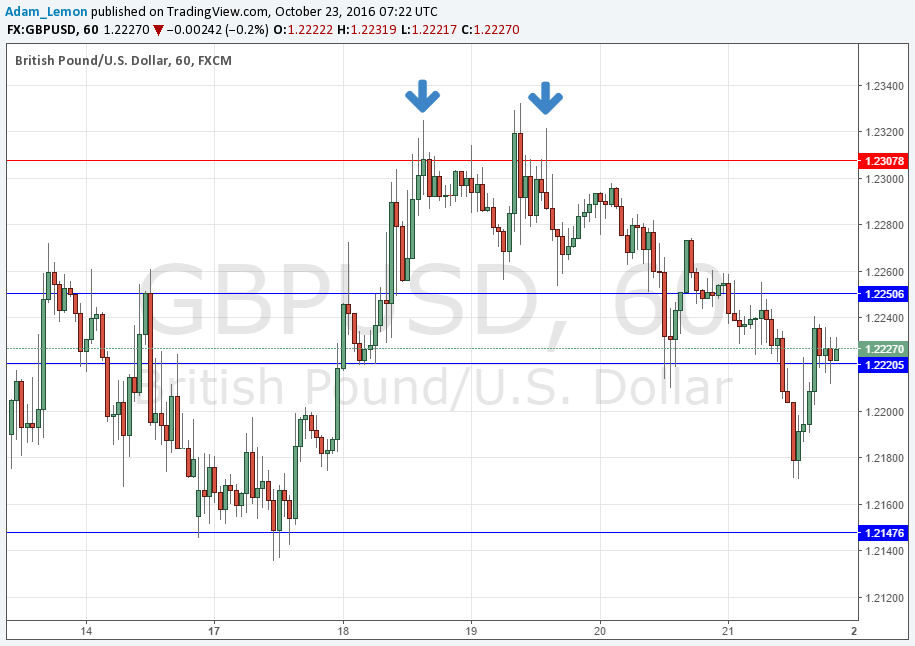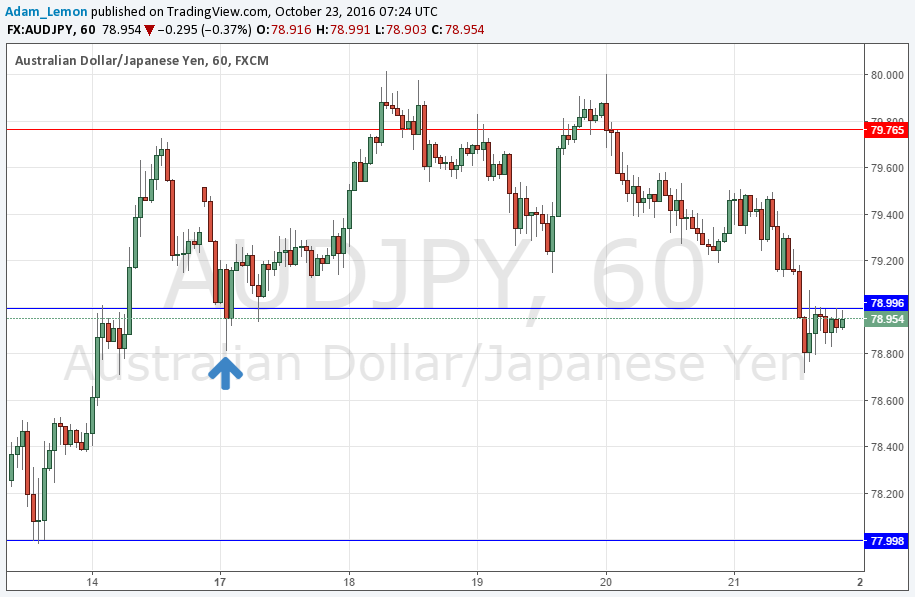This week we’ll begin with our monthly and weekly forecasts of the currency pairs worth watching. The first part of our forecast is based upon our research of the past 11 years of Forex prices, which show that the following methodologies have all produced profitable results:
Trading the two currencies that are trending the most strongly over the past 3 months.
Assuming that trends are usually ready to reverse after 12 months.
Trading against very strong counter-trend movements by currency pairs made during the previous week.
Buying currencies with high interest rates and selling currencies with low interest rates.
Let’s take a look at the relevant data of currency price changes and interest rates to date, which we compiled using a trade-weighted index of the major global currencies:
Monthly Forecast October 2016
This month we forecasted that the highest-probability trade would again be long NZD/USD. So far, the trade is at a loss:
Weekly Forecast 23rd October 2016
Last week, we made no forecast.
This week, we again make no forecast, as there were no strong counter-trend movements.
This week has been dominated by relative strength in the New Zealand Dollar and British Pound, and relative weakness in the Canadian Dollar and the Euro. The weakness in the Canadian Dollar stands out.
Volatility was less than it was over the previous week, with only 37% of the major and minor currency pairs changing in value by more than 1%. Volatility should be even lower over this coming week, as there is a very light news schedule with little central bank input except for the British Pound.
You can trade our forecasts in a real or demo Forex brokerage account.
Key Support/Resistance Levels for Popular Pairs
We teach that trades should be entered and exited at or very close to key support and resistance levels. There are certain key support and resistance levels that should be watched on the more popular currency pairs this week, which might result in either reversals or breakouts:
Let’s see how trading two of these key pairs last week off key support and resistance levels could have worked out:
GBP/USD
We had expected the level at 1.2308 might act as resistance, as it had acted previously as both support and resistance. Note how these “flipping” levels can work well. The H1 chart below shows the how the price initially hit this level during the New York/London session overlap last Tuesday, a time which can be crucial for this currency pair. The price took a fair amount of time to turn around and reverse, forming a bearish Quasimodo / Head and Shoulders pattern, with the shoulders marked in the chart below by the down arrow. Entry was signaled by the bearish pin candle within the second shoulder. This short trade gave a maximum reward to risk ratio of about 3 to 1 so far, if the stop had been placed just above the high of the entry candlestick.
AUD/JPY
We had expected the level at 79.00 might act as support, as it had acted previously as both support and resistance. Note how these “flipping” levels can work really well. The H1 chart below shows the how the price initially hit this level during the Asian session last Monday, which can be a crucial time for this currency cross as it is comprised of two Asian currencies. The price reversed immediately with a bullish inside candle, marked by the up arrow in the chart. This long trade gave a maximum reward to risk ratio of more than 2 to 1, if the stop had been placed just below the low of the entry candlestick.
You can trade our forecasts in a real or demo Forex brokerage account to test the strategies and strengthen your self-confidence before investing real funds.





